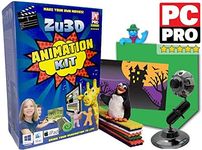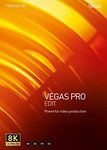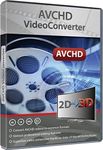Buying Guide for the Best Video Editing Software
Choosing the right video editing software can significantly impact the quality and efficiency of your video projects. Whether you're a beginner or a professional, understanding the key features and specifications of video editing software will help you make an informed decision. Consider your specific needs, such as the type of videos you plan to create, your skill level, and the hardware you have available. Here are some important specs to consider when selecting video editing software.User InterfaceThe user interface (UI) of video editing software refers to how the software looks and how easy it is to navigate. A good UI is important because it can make the editing process more intuitive and less frustrating. Beginners might prefer software with a simple and clean interface, while professionals might need more advanced features that could make the UI more complex. Choose a UI that matches your comfort level and editing needs.
CompatibilityCompatibility refers to whether the software can run on your computer's operating system and hardware. This is crucial because not all software works on all systems. Check the system requirements of the software to ensure it will run smoothly on your device. If you have a Mac, make sure the software is compatible with macOS; if you have a PC, ensure it works with Windows. Additionally, consider the hardware requirements like RAM and processor speed.
Supported FormatsSupported formats are the types of video, audio, and image files that the software can import and export. This is important because you need to be able to work with the file types you have and produce videos in formats that are widely accepted. Look for software that supports a wide range of formats, especially the ones you frequently use. If you work with high-resolution videos, ensure the software supports formats like 4K or even 8K.
Editing ToolsEditing tools are the features that allow you to manipulate your video footage. These include cutting, trimming, adding transitions, effects, and more. The importance of editing tools depends on your editing needs. Beginners might need basic tools like cut and trim, while professionals might require advanced features like color correction, motion tracking, and multi-camera editing. Choose software with the tools that match your editing style and project requirements.
PerformancePerformance refers to how efficiently the software runs, especially when handling large files or complex projects. Good performance is crucial for a smooth editing experience. Software that frequently crashes or lags can be very frustrating. Look for software that is known for stability and speed. If you plan to work on high-resolution videos or projects with many layers, ensure the software can handle such tasks without slowing down.
Export OptionsExport options are the settings and formats available for saving your final video. This is important because you need to be able to export your video in the format and quality you desire. Some software offers a wide range of export settings, including different resolutions, bitrates, and formats. Consider what platforms you will be sharing your videos on (e.g., YouTube, social media, professional presentations) and choose software that offers suitable export options.
Learning ResourcesLearning resources include tutorials, manuals, and community support that help you understand how to use the software. These are important because they can significantly shorten your learning curve and help you make the most of the software's features. Beginners should look for software with comprehensive tutorials and a supportive community. Professionals might benefit from advanced guides and forums where they can share tips and tricks.

![Sony Vegas Pro 12 [Download]](https://images-proxy.bestreviews.guide/y_HqTIfFxipHbUwqmYJgBm49dAY=/0x150/https://m.media-amazon.com/images/I/51OGB8pKmCL._AC_CX679_.jpg)








![Sony Vegas Pro Suite [Download]](https://images-proxy.bestreviews.guide/b5Gh1zNNImh0myJUgM5tHr35T-4=/0x150/https://m.media-amazon.com/images/I/51i+S7UFiCL._AC_CX679_.jpg)







